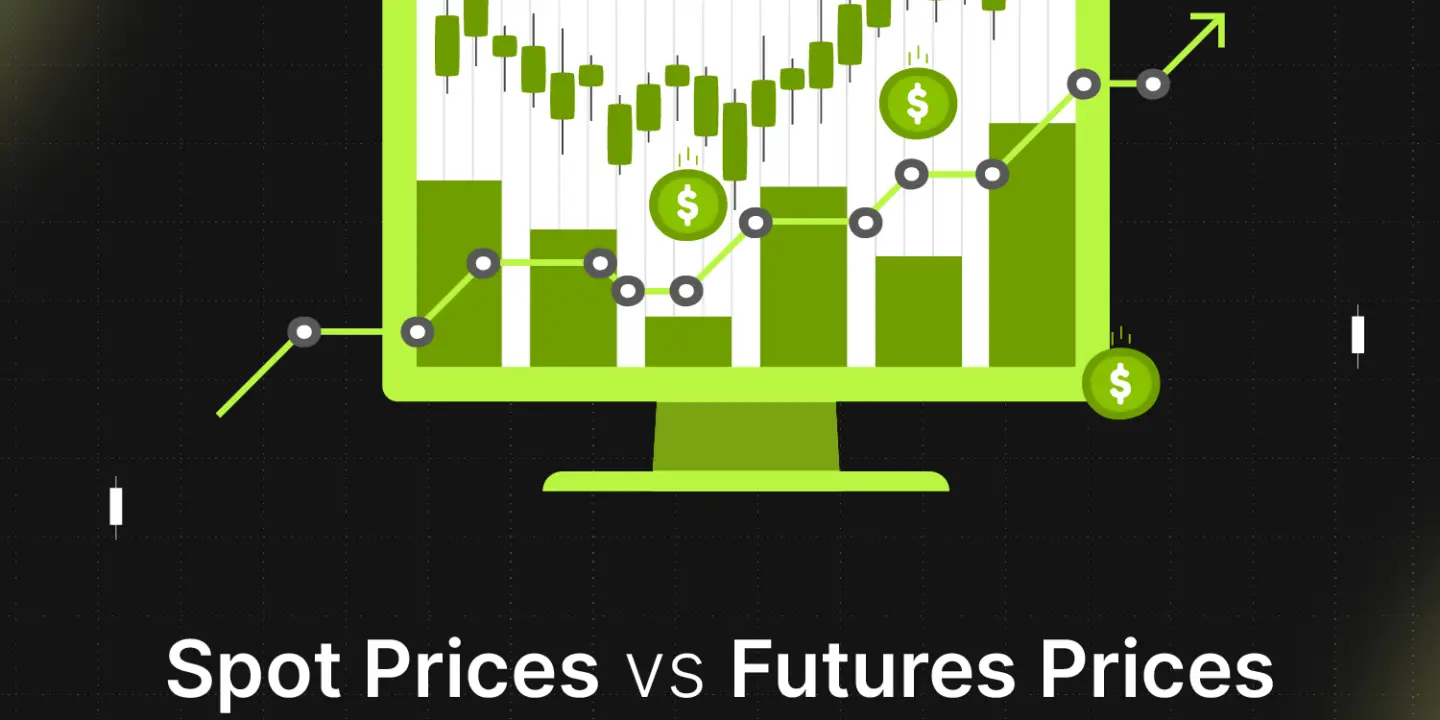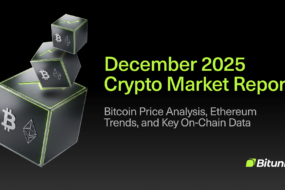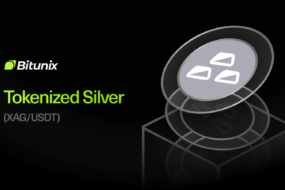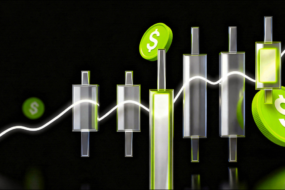
Whether you are a Newbie or expert in trading Understanding the intricacies of the cryptocurrency market is crucial for you as a trader. Among the fundamental concepts are spot prices and futures prices.
These two pricing mechanisms play essential roles in the trading and investment landscape of cryptocurrencies. Hop on as we explore the definitions, differences, and examples of spot prices and futures prices in crypto trading, providing a comprehensive guide for both novice and seasoned traders.

What Are Spot Prices in Crypto Trading?
When we say spot price it simply means buying a particular asset at the given price in a particular time. A spot price in the context of cryptocurrency trading is the current price at which a particular cryptocurrency can be bought or sold for immediate delivery. It represents the current market value of the cryptocurrency at a specific moment in time. Spot prices are very important for traders who are looking to make immediate transactions without delay.
Spot prices works best for newbie traders who have little to no knowledge of cryptocurrency trading.
How Spot Prices Are Determined
Ever wonder how exchanges calculate Spot prices for cryptocurrencies, well they are determined by the dynamics of supply and demand on cryptocurrency exchanges. Several factors also influence spot prices, including:
Market Sentiment: News, rumors, and investor sentiment can cause rapid price changes in digital assets.
Trading Volume: High trading volumes can indicate strong interest and influence price movements. It means the more the liquidity of an asset which equates to trading volume, the greater the rate of price change
Macroeconomic Factors: Certain events such as regulatory changes, technological advancements, and macroeconomic trends can impact spot prices in cryptocurrency trading.
Market Orders: The balance between buy and sell orders directly affects the spot price.
Characteristics of Spot Prices
Immediate Delivery: Spot prices apply to transactions that are settled immediately without delay. It works best for newbie traders.
Volatility: Due to the highly speculative nature of cryptocurrencies, spot prices can be extremely volatile. Investor’s sentiment in crypto trading leads to price volatility.
Market-Driven: Spot prices are generally market driven and reflects real-time market conditions and can change rapidly within minutes or even seconds.
Examples of Spot Prices
Bitcoin ($BTC): If the spot price of Bitcoin is $40,000, a trader can buy or sell Bitcoin at this price for immediate settlement. It means for $40,000 per Bitcoin ($BTC), when order is initiated, it will be filled immediately without respite.
Ethereum (ETH): Suppose the spot price of Ethereum is $3,000. Investors can transact at this price to receive Ethereum immediately.
Ripple ($XRP): If the spot price of Ripple is $0.75, it means that this is the current market price at which $XRP can be bought or sold instantly.

What Are Futures Prices in Crypto Trading?
A futures price in the context of cryptocurrency trading is the agreed-upon price for the delivery of a specific cryptocurrency at a future date. Futures prices are established through futures contracts, which are standardized agreements traded on futures exchanges like Bitunix.
These contracts obligate the buyer to purchase, and the seller to sell, a specified amount of cryptocurrency at a predetermined price on a specified future date in this instance, there is a respite.
How Futures Prices Are Determined
Futures prices for cryptocurrencies are influenced by several factors, including:
Current Spot Prices: The current price of the cryptocurrency in the spot market.
Interest Rates: The cost of holding a position until the contract’s expiration.
Market Expectations: Predictions about future price movements based on market sentiment and analysis.
Supply and Demand: Anticipated changes in supply and demand can affect futures prices.
Characteristics of Futures Prices
Future Delivery: Futures prices apply to transactions that will be settled at a specified future date.
Leverage: Futures trading often involves leverage, allowing traders to control larger positions with a smaller amount of capital. Trading exchange like Bitunix offers about 125x to increase your percentage of gains on a particular trade with risk adequate risk management.
Standardization: Futures contracts are standardized in terms of quantity, quality, and delivery date.
Examples of Futures Prices
Bitcoin Futures: If the futures price for Bitcoin with a delivery date three months from now is $67,000, traders agree to buy or sell Bitcoin at this price on the contract’s expiration date.
Ethereum Futures: Suppose the futures price for Ethereum for delivery in six months is $3,950. This price is locked in for the future transaction, irrespective of the spot price at that time.
Litecoin Futures: If the futures price of Litecoin for a future date is $85, traders commit to transacting Litecoin at this price when the contract matures.
Key Differences Between Spot Prices and Futures Prices in Crypto Trading
As a crypto trader, you need to know and understand the distinctions between spot prices and futures prices so that you will navigate the crypto market effectively. Here are the main differences:
Timing of Delivery
Spot Prices: Immediate delivery. Transactions are settled “on the spot.” Without respite.
Futures Prices: Future delivery. Transactions are settled on a specified future date as per the contract. There is a delay base on the order type.
Price Determination
Spot Prices: Determined by current market supply and demand.
Futures Prices: Influenced by current spot prices, interest rates, holding costs, and market expectations.
Purpose
Spot Prices: Used for immediate transactions and to determine the current market value of a cryptocurrency.
Futures Prices: Used for hedging against price changes, speculation, and planning future transactions.
Market Participants
Spot Market: Includes immediate buyers and sellers of cryptocurrencies.Spot market trading largely encompasses of newbie traders and long term investors alike.
Futures Market: Includes hedgers, speculators, swing traders and arbitrageurs looking to profit from price movements or manage risk.
Risk and Leverage
Spot Market: Transactions typically do not involve leverage, meaning traders must fully fund their purchases. In spot trading, there is zero to no risk when assets are properly analyze except in the case of a collapse like the Terra Luna crash and the Sam Bankman Fried’s FTX plight that led to Terra Luna and $FTT tokens crash.
Futures Market: Often involves leverage, allowing traders to control large positions with a smaller amount of capital, increasing both potential profits and risks. Traders can take advantage of Bitunix which offers about 125x leverage on Futures perpetual contract.

The Relationship Between Spot and Futures Prices in Crypto Trading
The relationship between spot prices and futures prices in crypto trading is influenced by several factors and can manifest in two primary market conditions: contango and backwardation.
Contango
Contango occurs when the futures price of a cryptocurrency is higher than its spot price. This situation often arises due to the costs associated with holding and storing the asset until the delivery date, as well as positive market sentiment about the future price.
Example:
- Spot Price of Bitcoin: $67,000
- Futures Price (3 months): $69,000
The $2,000 difference in $BTC can be attributed to market expectations of a price increase, as well as potential costs associated with holding the position.
Backwardation
Backwardation occurs when the futures price of a cryptocurrency is lower than its spot price. This situation can arise when the market anticipates a decrease in the asset’s price due to factors such as expected regulatory changes or a projected increase in supply.
It simply implies the trader foreseeing or analyzing a certain asset will depreciate in price in the future.
Example:
- Spot Price of Ethereum: $3,900
- Futures Price (3 months): $2,900
In this case, the market expects Ethereum prices to decline over the next three months.
Practical Examples of Spot and Futures Markets in Crypto Trading
Spot Market Example
Let’s say a trader wants to purchase 1 Bitcoin immediately. The current spot price of Bitcoin is $67,000. The trader pays $67,000 and receives the Bitcoin instantly without respite to his/her spot account, allowing them to hold, trade, stake or use it as they see fit.
Futures Market Example
A trader anticipates that the price of Bitcoin will rise over the next six months. They buy a Bitcoin futures contract with a price of $67,000. If the spot price of Bitcoin increases to $70,000 at the contract’s expiration, the trader can profit from the difference.
Hedging and Speculation with Spot and Futures Prices in Crypto Trading
Hedging
Hedging is a risk management strategy used to offset potential losses in an investment by taking an opposite position in a related asset. Both spot and futures prices are integral to hedging strategies in crypto trading.
Example
For instance, a cryptocurrency miner is concerned about the potential decline in Bitcoin prices. They sell Bitcoin futures contracts to lock in a sale price for their future Bitcoin production. This hedge protects them from price declines while ensuring a predictable revenue stream. This strategy works best for experience traders as it involves some advance knowledge in cryptocurrency trading.
Speculation
Speculators seek to profit from price movements in the market. They use both spot and futures prices to capitalize on their predictions. Traders who are often speculators used various tools and strategies to make informed decisions on their trades like past historic price performance, economic condition at a particular time and fear and greed sentiments
Example
A speculator believes that the price of Ethereum will rise in the next three months. They buy Ethereum futures at a lower price, hoping to sell them at a higher price as the market price increases.
Impact of Economic Events on Spot and Futures Prices in Crypto Trading
Economic events, such as regulatory changes, technological advancements, current open interest on an asset and macroeconomic trends, can significantly impact spot and futures prices in crypto trading.
Regulatory Changes
Changes in cryptocurrency regulations can have adverse effect on spot and futures prices. For example, if a country announces a ban on cryptocurrency trading, the spot prices may plummet due to decreased demand and increased selling pressure. Futures prices may also drop as traders anticipate further regulatory crackdowns.
Technological Advancements
Technological advancements, such as improvements in blockchain technology or the introduction of new, scalable solutions, can positively impact cryptocurrency prices. For instance, the announcement of the major upgrade of Ethereum network from Proof of Work (PoW) to Proof of Stake (PoS) led to a slight increase in both spot and futures prices as investors expected higher adoption and utility.
Macroeconomic Trends
Broader macroeconomic trends, such as inflation rates, interest rates, and economic growth, can also influence cryptocurrency prices. During periods of high inflation, cryptocurrencies may be seen as a hedge against fiat currency devaluation, leading to higher spot and futures prices.
Open Interest
Open interest is a crucial concept in cryptocurrency trading that can also affect cryptocurrency prices, particularly in the context of derivatives such as futures and options. It refers to the total number of outstanding derivative contracts, such as futures or options, that have not been settled or closed by offsetting trades. Open interest provides valuable insights into market sentiment and the strength of price trends.
It is the total number of active contracts in a particular futures or options market that have not been settled. It increases when new contracts are created (i.e., a buyer and a seller enter into a new contract), and it decreases when existing contracts are closed or settled (i.e., either by executing the opposite trade or by contract expiration).
Conclusion
With everything discussed above, I hope you have a clear understanding on Spot prices and futures prices as the fundamental concepts in crypto trading that serve different purposes and cater to different market participants, whether you are a newbie or experience trader.
Spot prices reflect the current market value of a cryptocurrency and are used for immediate transactions without delay. In contrast, futures prices are agreed-upon prices for future transactions, influenced by market expectations and used for hedging and speculation.
As a trader you need to Understand the relationship between spot and futures prices, as well as the factors that influence them, that is very crucial for you to become effective in trading and investment in the volatile world of cryptocurrencies. Whether you are a trader looking to capitalize on short-term price movements or an investor seeking to manage risk, a solid grasp of these pricing mechanisms will enhance your ability to navigate the crypto market.












